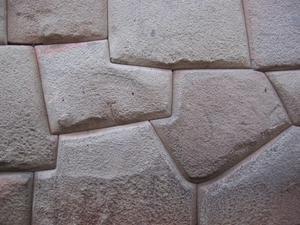Advertisement
Published: January 22nd 2006

 Inca Stonework
Inca Stonework
Cusco was the capital of the Inca empire and there are many examples of their amazing masonry in the city and surrounding areas. All of their stones were irregulary shaped and locked into the next stone without mortar for increased strength. Through the detailed connections between stones and at corners, and the layout of the walls, the Incas made their buildings very seismically resistant.From Lima, we flew to the city of Cusco. At 3,326 m (about 11,500 feet), it took us a couple of days to acclimate and get ready for the next phase of our trip. Mate de Coca (coca leaves) is served everywhere to help fight the symptoms of altitude sickness. Cusco (originally called ¨Cosco¨which means ¨belly-button¨in Quechua) was the center of the Inca empire. It is also apparently the continent´s oldest continuously occupied city. Many of the Inca buildings here were destroyed by the Spanish, who built many of their buildings on top of the Inca foundation walls. There are many Inca ruins outside of the city center and in the Sacred Valley outside of Cusco along the Urubamba River (which becomes the Amazon in Northern Peru and into Brazil).
Cusco is a big city (approximately 350,000 inhabitants) but the city center is all narrow, windy, cobblestone streets with many examples of Spanish Colonial buildings. Tourism is the city´s biggest industry, now, though, and hotels, travel agencies, shops and tourist restaurants are abundant. We were amazed at the amount of Pizza and Italian food served here!
Next Stop: The Inca Trail to Machu Picchu
Advertisement
Tot: 0.175s; Tpl: 0.012s; cc: 9; qc: 56; dbt: 0.1315s; 1; m:domysql w:travelblog (10.17.0.13); sld: 1;
; mem: 1.1mb

 Inca Stonework
Inca Stonework




























